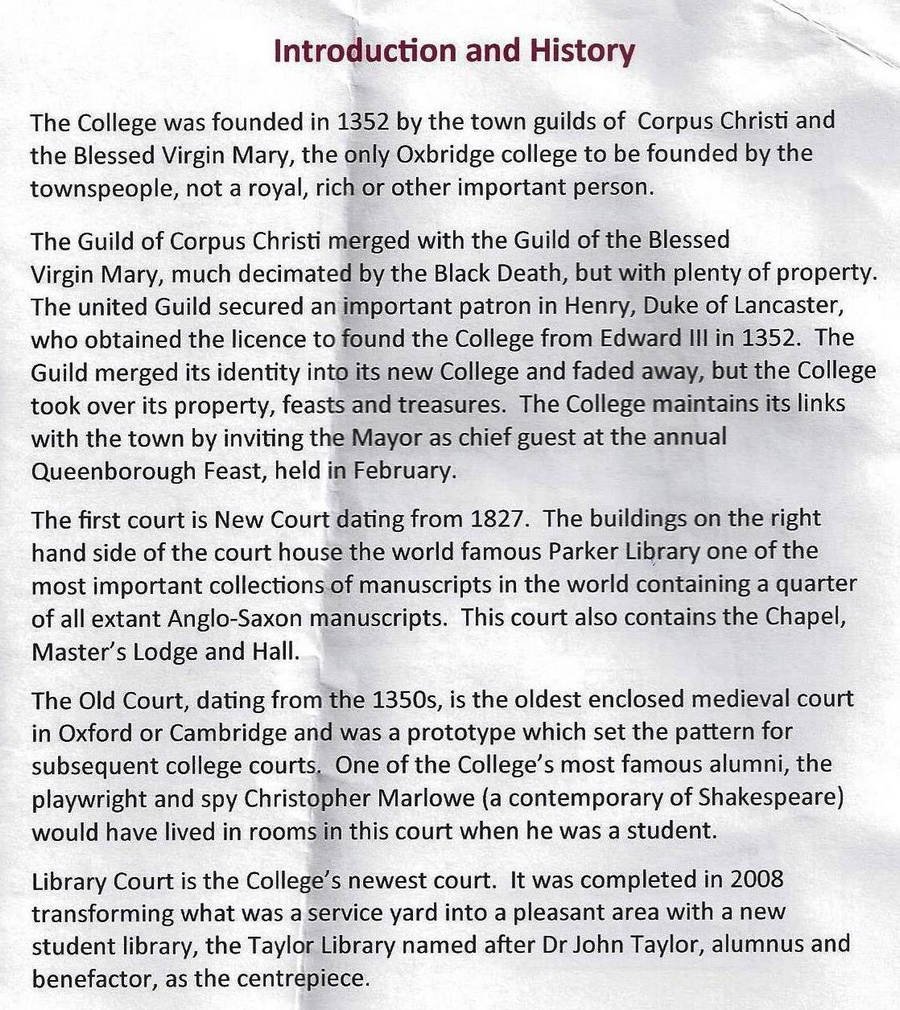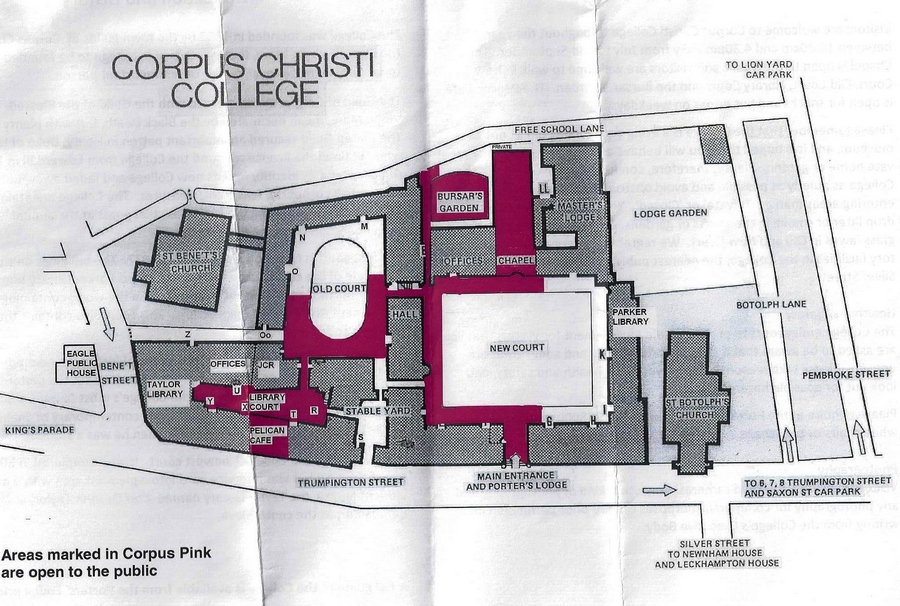
Navigation / Home / Family History / DNA Project / Photos / Stories / Gravestones / Back to John Botwright Coat of Arms
Corpus Christi College, Cambridge, England


Corpus Christie College Old Court - John Botwright would have lived and walked within this court and buildings while he served as Master of the College from 1443 - 1474:
Corpus Christie College Old Court
Corpus Christie College Old Court
St. Bene't's Church, Cambridge, England
The church is on the south side of Bene't Street next to Corpus Christi College. St. Bene't's was the College's chapel until 1579. The College remains the church's patron, and there are continuing links between the church and the College chapel. Source: Wikipedia
Today, the ancient church of St. Benedict - known as St. Bene't's - is the oldest surviving
building in Cambridge. Even before the establishment of the University some 800 years ago,
Cambridge - or Grantabrycge as it was known - was already a significant settlement and an
important centre of spiritual learning. Source: University of Cambridge
This ancient parish church is an Anglo-Saxon foundation dating from around 1020, when Canute was King of England. It is dedicated to St. Benedict and has been a place of Christian worship for nearly a thousand years. In 1352 the Guild of Corpus Christi, based at this church, founded Corpus Christi College. In 1631 Thomas Hobson (of the phrase Hobson's choice) was buried in an unmarked grave in the chancel. Michael Ramsey, who was to become Archbishop of Canterbury, was vicar here in 1938. From 1945 to 2005 the vicar was a brother of the Society of St. Francis. Leaflets on the church building are available in the Church.
The footprint of the tower, nave and chancel is Anglo-Saxon. The quoins (corners) of the tower and nave feature the distinctive "long and short" corner dressings of Barnack stone. The lintel of the bell opening is carved from a single stone, and there are indications of missing decorative strip work. The purpose of the round holes is unknown, but some say they were made to encourage owls to nest - and therefore catch mice. The two larger round-arched openings are from the sixteenth century. The arch from the tower to the nave is surmounted by two magnificent if crudely carved lions.
It is likely that the tower was built to contain bells from the beginning, but the earliest record of bells in the tower dates to the 13th century - by which time the bell of St Bene't's was used to summon students to special lectures and to examinations. The Rector, Alan, complained about this in 1273, but was persuaded by the Bishop of Ely to permit the bell to be used 'in a civil and honest way'. Thereafter the parish clerk was paid an annual fee of six shillings and eightpence for such ringing. It is likely that there was more than one bell in the tower so it may have possessed a peal of four bells; the tenor was the best bell in town.
For many years after that, St Bene't's bells were used for summoning to 'ye schooles ... acts, clearums, congregations, lecturs, disses, and such like' according to a receipt for the six shillings and eightpence dated 1624. In 1553 there were 'thre great Belles and one Sanctus Bell', but by 1650 they were 'much out of frame and almost become uselesse'. In 1655 the churchwardens appealed for money to repair the bells. The University gave thirty shillings, with the caveat that it was a free gift, not to be regarded as setting a precedent. Corpus Christi College also gave money.
Source: St. Bene't's Church website - http://stbenetschurch.org/
last modified: September 9, 2013
URL: http://www.boatwrightgenealogy.com
Navigation / Home / Family History / DNA Project / Photos / Stories / Gravestones / Back to John Botwright Coat of Arms